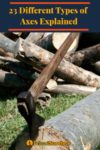Many types of axe are available, and we’re going to explore them all. From the common axe types you’re familiar with to the rare and intriguing examples that are less likely to cross your path.
It’s best to break these axe types into individual groups because not all are appropriate for all types of work. After all, you wouldn’t want to use a tomahawk to chop firewood, would you?
Axes for Survival
Tactical Axe
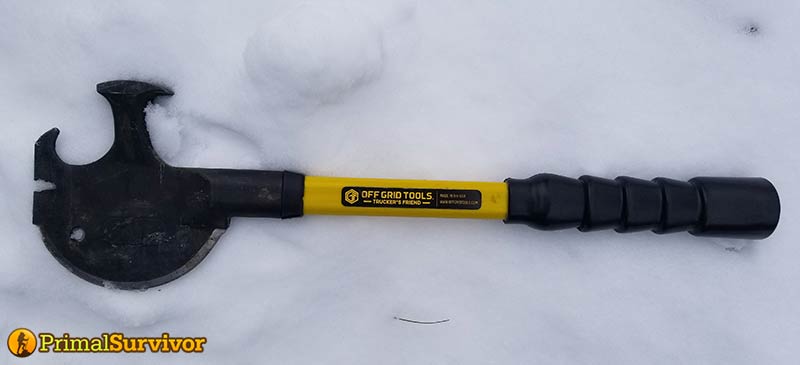
A more modern invention, the tactical axe is a “do-it-all” kind of tool, designed to be primarily a chopping implement but capable of functioning as a weapon, shovel, prybar, and sometimes a hammer.
Lighter and more aerodynamic models can function as tomahawks, while other examples are more sturdy and designed for heavy duty work in the field. Most are full tang and forged from high quality steel to meet the demands placed on them.
See our full review of the Off Grid Tools hammer axe.
Hudson Bay Axe
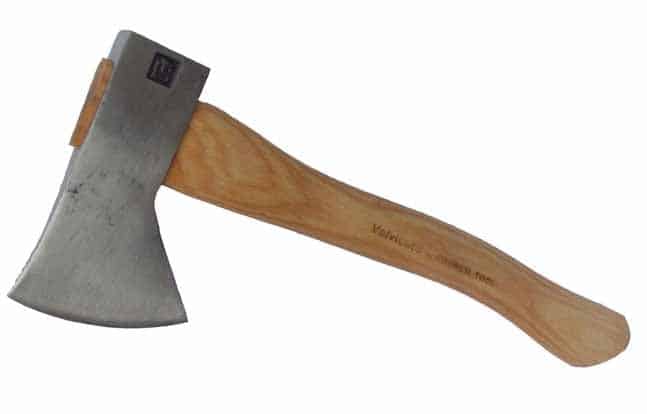
Image Credit: Council Tool
A general-purpose axe used by French trappers in the Americas, the Hudson Bay axe serves a variety of purposes. Its one-handed design makes it useful for light duty and minor chopping and splitting.
Forest Axe
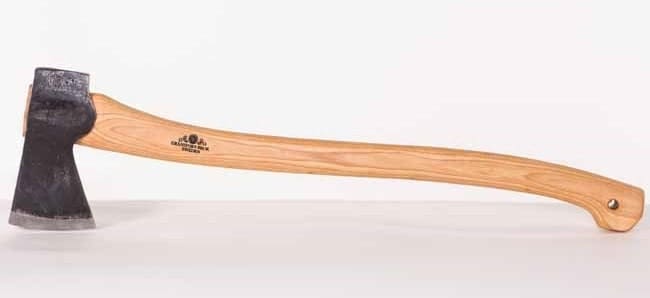
Image Credit: Gransfors Bruk
A heavy-duty axe meant for serious use and abuse in isolated pockets of forested lands. It’s another all-purpose tool, but its robust design and construction earn it its own rank in this list.
Axe Head Mattock
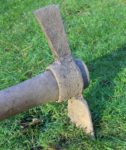
Although a tool for workers in many trades, I’m including the axe head mattock in the Survival Axes category because of how valuable it is as a survival tool.
While it’s great for digging through soil of any hardness and consistency, its true value is as an axe intended for chopping through tough roots.
Work Type Axes
Splitting Maul
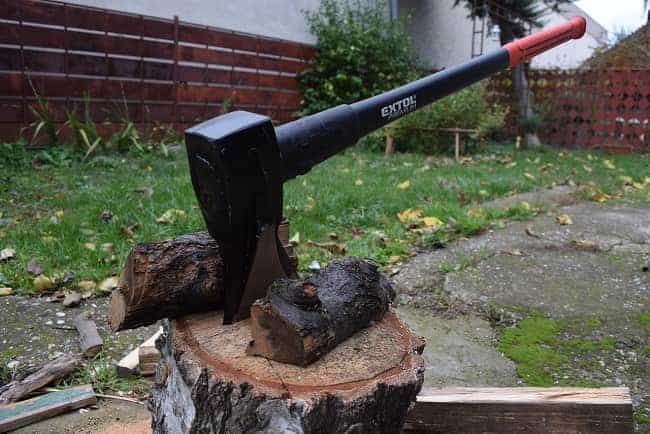
A heavy type of axe specialized for splitting wood along the grain. These tend to have a hefty wedge-shaped head weighing about eight pounds, sharp on end and a blunt edge on the other.
This is a very heavy tool and is designed specifically for downward-swinging chops. It is essentially useless for any side-swinging movements.
A splitting maul can keep a dull edge for a longer time than other axes because it’s the shape and weight of the head that make it excel at its primary purpose.
Hatchet
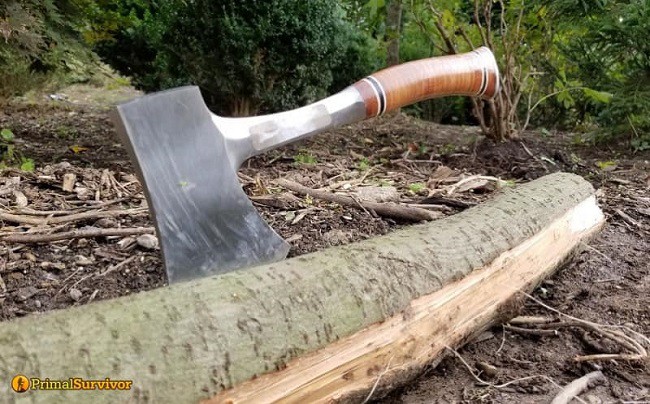
An all-around chopping tool, a hatchet has the benefit of being light and easily wielded.
Best used for general bushcraft and all-purpose projects like making kindling, chopping medium-sized logs into more manageable chunks, and splitting smaller pieces of wood.
Keeping a hatchet handy (like our favorite, the Estwing Sportman’s Axe) on your belt or in your pack is very easy compared to the other options here, and its general-use versatility makes it handy to have at all times.
Broad Axe
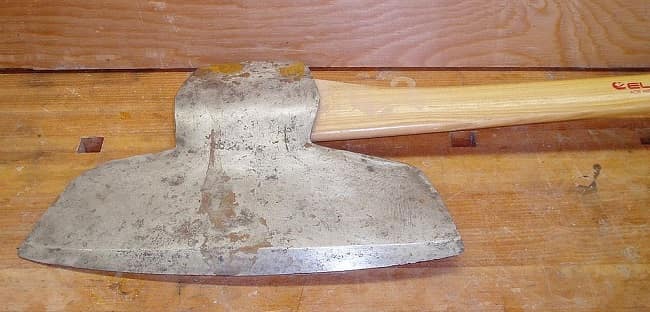
A large-headed type of axe used mostly for hewing or shaping logs.
You’ll encounter two types of broad axes; one with a blade that is single beveled and one with a double bevel.
The single bevel variety is excellent for hewing flat planes on a log and other pieces of wood.
The double bevel can be used to hew and is also capable of general chopping and notching work.
Felling Axe
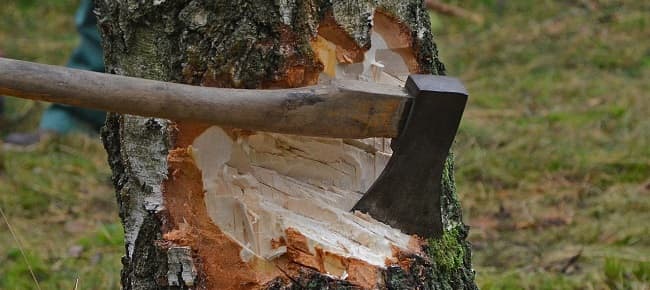
The image that often springs to mind when one imagines an axe, the felling axe has a relatively thin but very sharp blade with a slightly tapered head.
You’ll find these weigh in a modest weight of up to four pounds, this lighter weight allowing them to be wielded more accurately for felling and removing limbs from trees.
While they excel at chopping, they aren’t as great at splitting wood, their sharp and thin blade often getting wedged into a log.
Carpenter’s Axe
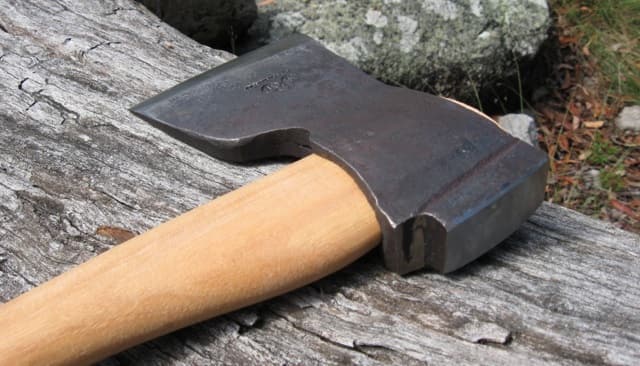
A medium-sized tool, the carpenter’s axe is designed for fine and detailed woodworking. It’s between the size of a felling axe and a hatchet, a perfect size for leverage and control in tasks in a wood shop.
If you’re a homesteader or intend to build your own home from raw trees, a carpenter’s axe is the tool you need for this kind of work.
Save the chopping for your hatchet and felling axe; the carpenter’s axe is a true craftsman’s tool.
Double Bit Axe
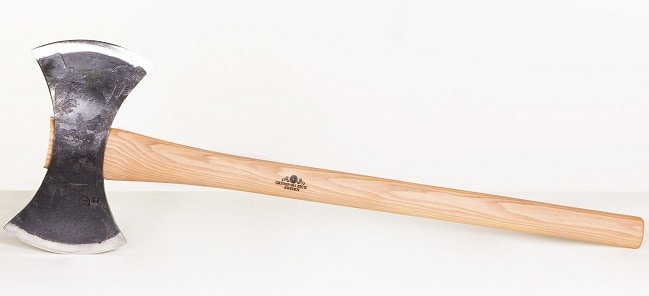
Similar to a felling axe, the double bit axe has two blades on its head.
One side is traditionally sharper for felling trees, while the other end of the blade is dull and intended for limb removal.
The double bit is nice because it essentially transforms two axes into one multi-purpose tool, but it’s not as effective as a regular felling axe. A good choice if you’ve only got the space for one.
Miner’s Axe
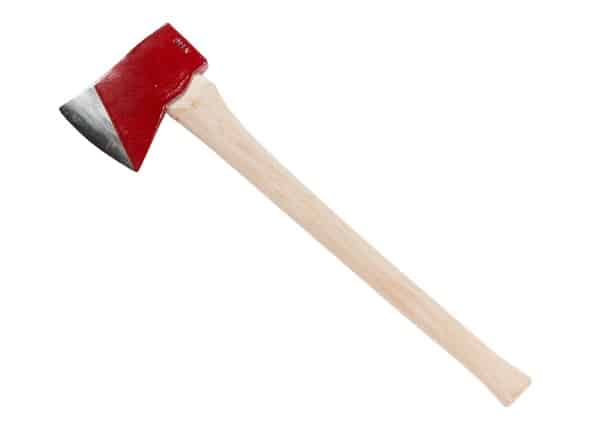
A general purpose ax used in, you guessed it, mines and other cramped quarters. Features a short handle to aid maneuverability.
Useful tool for niche fields.
Dayton Axe
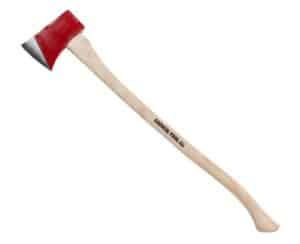
Image Credit: Council Tool
A full-sized version of the felling axe, the Dayton adds more weight and oomph behind its blows. This makes it a specialized felling axe for the hardest chores.
Axes for War and Combat
Viking/Danish Axe
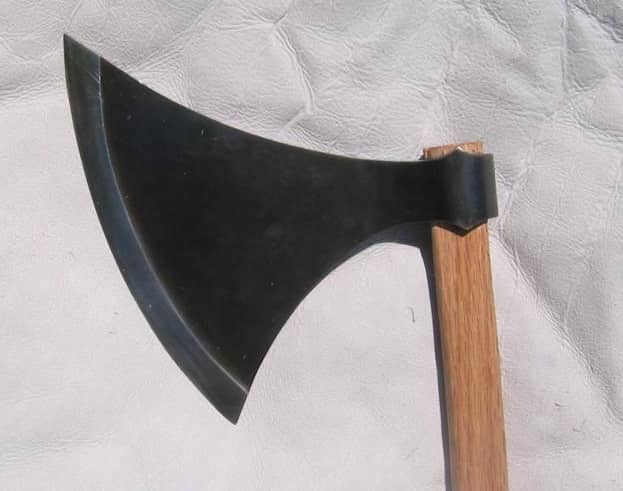
An axe used by Vikings in battle, the Viking or Danish axe served just as well at home and field.
It’s a very long handled tool with an incredibly sharp blade. You won’t see many of these nowadays, but they are a staple in fiction and fantasy, and you’ll spot them carried around by historical recreationists.
Battle Axe
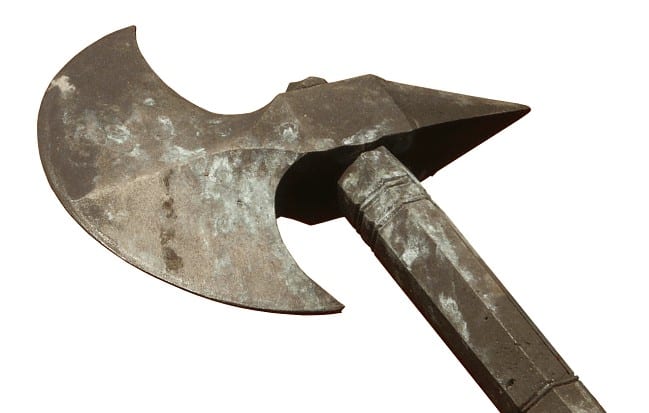
You aren’t likely to encounter this anywhere except the museum!
Wildly ranging in size from one to seven pounds and anywhere from one to five feet in length, the battle axe was built specifically for combat.
While they could serve in a pinch as a regular tool, they were specifically designed for the wear and tear of war.
Tomahawk
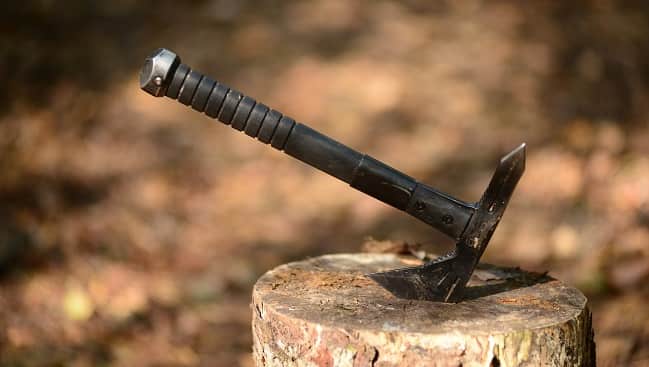
An example of a highly specialized ax, this is a North American design used primarily for combat but capable of general purpose work.
The originals sported a stone head, but the introduction of metal blades improved the balance and durability.
Modern tomahawks are about two feet long and weigh about a pound. Many are designed for perfect balance as a throwing weapon and can be easily confused with tactical axes.
Bardiche
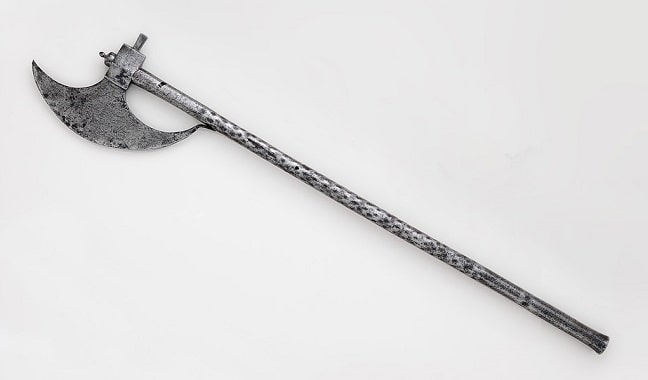
Holy smokes, look at that thing! In medieval combat, soldiers on horseback were the elite units that broke apart armies. But the bardiche is what broke the men on horseback!
It’s got a huge blade intended for massive impact.
Axe-Pistol
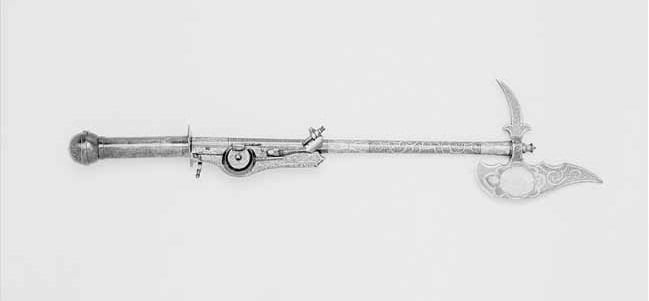
A German invention, the axe-pistol is exactly what it sounds like. A flintlock pistol with an axe head made it a powerful tool for close quarters combat. Let’s just hope that pistol doesn’t fire when it’s not supposed to.
Dagger Axe
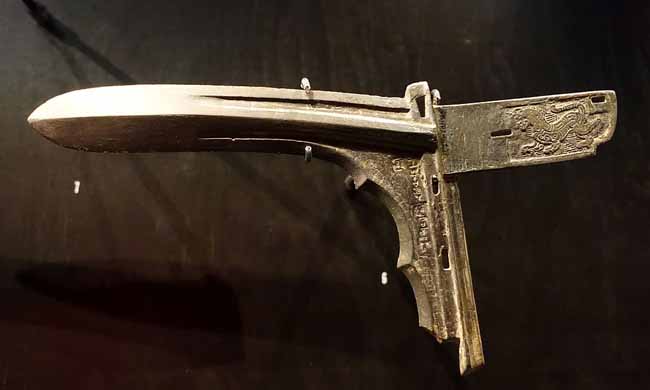
Another Chinese weapon, the dagger axe was a wickedly effective puncturing weapon affixed to a long shaft. This axe is essentially a dagger on a stick. It was never intended for any purpose except combat.
Halberd
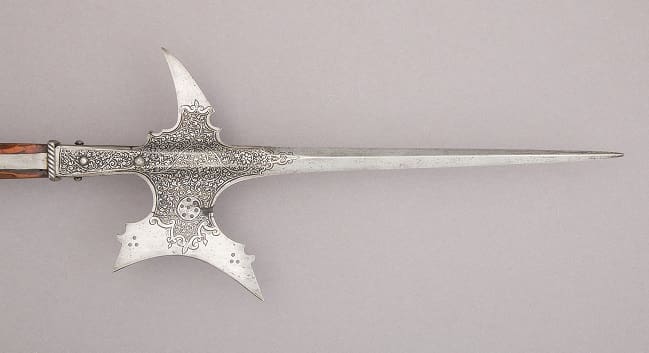
A personal favorite, the halberd is an axe and spear combined. It’s a weapon with a lot of reach and intimidation factor. The Swiss Guard at the Vatican sport a halberd as a still-effective tool of combat.
Axes for… Other Stuff
Pickhead Axe
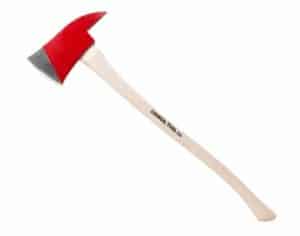
Image Credit: Council Tool
An axe is useful for smashing through obstacles. The chopping end serves all of your general purpose axe needs, while the pick end can be used to break through more stubborn obstacles.
Executioner’s Axe
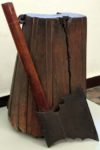
A huge, heavy blade was wielded by a guy with the unenviable job of beheading criminals and whoever managed to upset the powers that be.
This weapon served one exclusive purpose, and it did this terrifyingly well.
Shepherd’s Axe
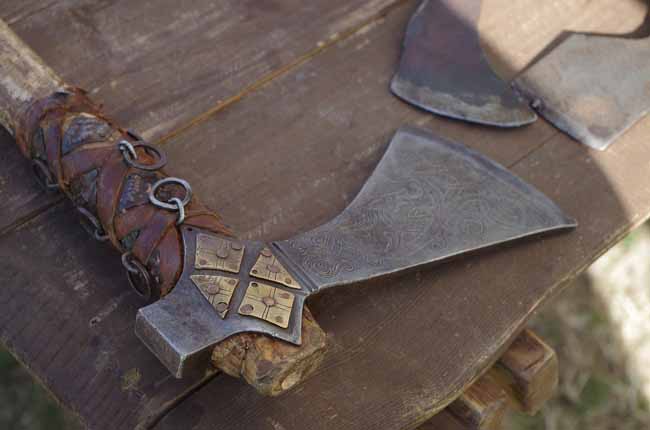
An interesting axe for sure that doubled (and had a primary use) as a walking stick. A neat weapon for light duty, the shepherd’s axe comes to us from Eastern Europe.
The handles are often intricately carved and surviving relics are incredibly beautiful pieces of art.
Ice Axe
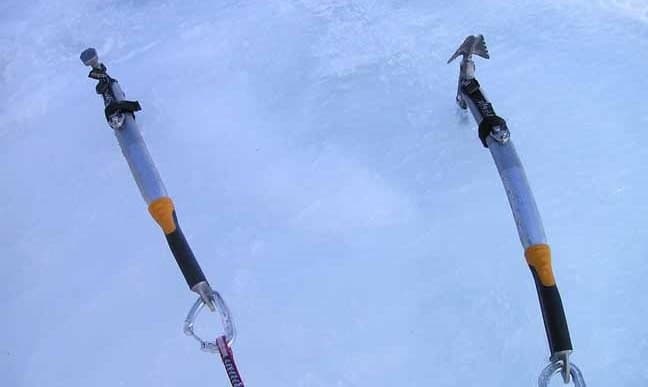
A hyper specialized tool, the ice axe serves multiple purposes for mountaineers in snow climes. The axe end is generally used for chopping into ice while the pick end can serve as a point of leverage.
Cosmoh [CC BY-SA 3.0], via Wikimedia Commons
Stemonitis [CC BY-SA 3.0], via Wikimedia Commons
Anagoria [CC BY 3.0], via Wikimedia Commons
